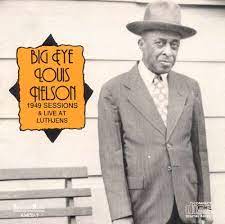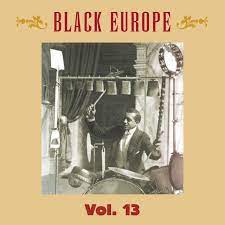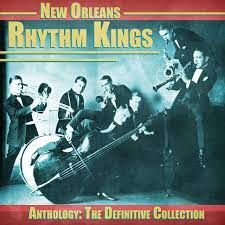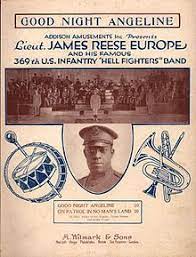
Daily Dose Of Jazz…
William Crickett Smith was born on February 8, 1881 in Emporia, Kansas, the child of Tennessee Exodusters. His professional career began in childhood, performing in Nathaniel Clark Smith’s Picaninny Band before moving into minstrel troupes, vaudeville and cabaret.
In 1913-1914, he made several early recordings with James Reese Europe’s group, the Clef Club Society Orchestra. Between 1914 and 1919, he performed in the Ford Dabney Orchestra, the resident band at Florenz Ziegfeld’s Broadway cabaret, Midnight Frolics. Between 1917-1919, they produced several dozen phonographs.
By 1919 Smith had relocated to Paris, France playing with Louis Mitchell’s Jazz Kings until 1924. The group recorded for Pathe Records. He became the leader of Mitchell’s group in 1923. He went on to tour France, Spain and Russia with his own bands from 1925 to 1933. However, during the Depression, he spent nine years in Southeast Asia, working with Herb Flemming, Leon Abbey, and Teddy Weatherford, mostly in Bombay and Batavia. In 1936, he recorded with a group called the Symphonians.
Around 1943 cornetist and trumpeter Crickett Smith, who played jazz blues and ragtime, returned to New York City and the following year transitioned on August 30, 1944.
More Posts: bandleader,cornet,history,instrumental,jazz,music,trumpet

Daily Dose Of Jazz…
Big Eye Louis Nelson was born Louis Nelson Delisle on January 28, 1885 in New Orleans, Louisiana into a family who were Creoles of color. He spent most of his life in his hometown and studied clarinet with the elder Lorenzo Tio.
By the age of 15, Big Eye was working professionally in the music venues of Storyville, an area of brothels and clubs in New Orleans where Black musicians could find work. He developed a style of hot jazz, also known as Dixieland, and was an influence on clarinetists Johnny Dodds and Jimmie Noone.
In 1917, Nelson joined the reconstituted Original Creole Orchestra that included Freddie Keppard and Bill Johnson. Disbanded in Boston in the spring of that year, it was reassembled in New York City later in the fall. After a short while, he was replaced by Jimmie Noone. He was the regular clarinetist with the Jones & Collins Astoria Hot Eight but did not play on their 1929 recording sessions.
He made his only recordings in his later years in the 1940s, by which time he was often in poor health. Dixieland clarinetist Big Eye Louis Nelson, who also played double bass, banjo, and accordion, transitioned on August 20, 1949.
More Posts: accordion,bandleader,banjo,bass,clarinet,history,instrumental,jazz,music

Daily Dose Of Jazz…
Louis A. Mitchell was born December 17, 1885 in Philadelphia, Pennsylvania and began performing in vaudeville revues and minstrel shows from around the turn of the century, playing drums and bandoline. After a move to New York City in 1912, he founded his own group, the Southern Symphonists’ Quartet.
He sang and drummed for James Reese Europe in 1918, and the following year founded a new group, which he called Louis Mitchell’s Jazz Kings. By the end of the decade, Mitchell began touring the United States, as well as, Europe, concentrating on the United Kingdom and France. He did solo percussion shows in addition to ensemble programs, and his drum solos were greeted harshly by French audiences. Nevertheless, his ensemble spent five years as the house band of the Casino de Paris.
He recorded for Pathe Records in 1922 and 1923, with Sidney Bechet playing with him at this time, however, Bechet did not appear on the recordings. Louis remained in France until 1930, branching into restaurant and nightclub management in addition to music. He renamed one of his clubs Chez Florence due to the popularity of performer Florence Embry Jones.
Moving back to the United States in 1930 after the failure of The Plantation, his last club, but he played little in his last decades. Drummer and bandleader Louis Mitchell transitioned on September 12, 1957.
More Posts: bandleader,drums,history,instrumental,jazz,music

Daily Dose Of Jazz…
Martin Abraham, better known as Chink Martin, on June 10, 1886 in New Orleans, Louisiana. He played guitar in his youth before settling on tuba as his main instrument. He played with Papa Jack Laine’s Reliance Brass Band around 1910, and worked in various other brass bands in the city in the 1910s.
In 1923, he traveled to Chicago, Illinois and played with the New Orleans Rhythm Kings with whom he made his first records. He also recorded guitar duets with Leon Roppolo, but these unfortunately were never issued. Returning to New Orleans with the Rhythm Kings in 1925, Martin made further recordings with them.
He also played with the Halfway House Orchestra with which he recorded on both tuba and string bass, the New Orleans Harmony Kings, and the New Orleans Swing Kings. In the 1930s, Martin worked as a staff musician at WSMB radio. He continued to play tuba for his entire career, though he also played and recorded on the double-bass from at least the 1920s onward.
He played with dozens of noted New Orleans jazz musicians, appearing on record with Sharkey Bonano, Santo Pecora, Pete Fountain, Al Hirt, and others. Tubist Chink Martin, who released one album under his own name on Southland Records in 1963, transitioned on January 7, 1981 in New Orleans.
More Posts: bandleader,history,instrumental,jazz,music,tuba

Daily Dose Of Jazz…
James Reese Europe was born on February 22, 1881 in Mobile, Alabama and in 1891 his family moved to Washington, D.C. In 1904 he moved to New York City and six years later he organized the Clef Club, a society for Black Americans in the music industry. In 1912, the club, with its 125 members who played in various configurations, made history when they became the first band to play a proto-jazza concert at Carnegie Hall for the benefit of the Colored Music Settlement School.
The importance of this historic concert is that it took place 12 years before the Paul Whiteman and George Gershwin concert at Aeolian Hall, and 26 years before Benny Goodman’s famed concert at Carnegie. The Clef Club’s performances played music written solely by Black composers, including Harry T. Burleigh and Samuel Coleridge-Taylor.
In 1913 and 1914 Jim made a series of phonograph records for the Victor Talking Machine Company. These recordings are some of the best examples of the pre-jazz hot ragtime style of the U.S. Northeast of the 1910s, predating and protecting the idea that the Original Dixieland Jass Band recorded the first jazz pieces in 1917 for Victor.
Europe was known for his outspoken personality and unwillingness to bend to musical conventions, particularly in his insistence on playing his own style of music. During World War I, Europe obtained a commission in the New York Army National Guard, where he fought as a lieutenant with the 369th Infantry Regiment otherwise known as the “Harlem Hellfighters” when it was assigned to the French Army. He went on to direct the regimental band to great acclaim. They made their first recordings in France for the Pathé Brothers.
Returning home in 1919 he made more records for Pathé with Noble Sissle and continued to lead his band. During a talk backstage with two of his drummers, Steve and Herbert Wright about their stage behavior, Herbert got agitated and stabbed Europe in the neck with a pen knife. The show went on, Jim went to the hospital but doctors were unable to stem the flow of blood.
Arranger, composer and bandleader Jim Europe, who also played piano and violin, and was the leading ragtime and early jazz figure on the Negro music scene of New York City in the 1910s, transitioned on May 9, 1919.
More Posts: arranger,bandleader,composer,history,instrumental,jazz,music,piano,violin





